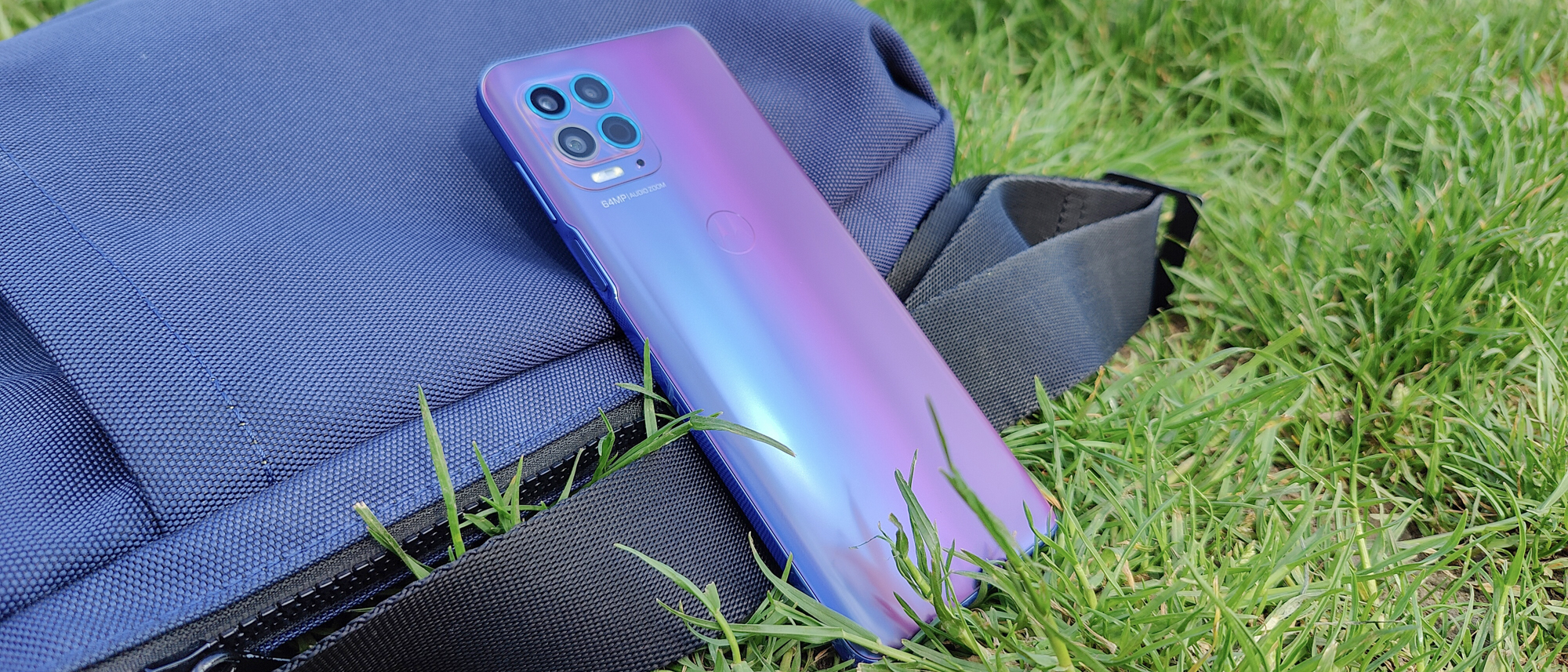Tom's Guide Verdict
With the Moto g100, Motorola successfully delivers a powerful set of features in a mid-range package. Any flaws in the premium-like experience are made up for by more unique features like the ReadyFor mode or the secondary ultrawide selfie camera.
Pros
- +
Powerful specs for price
- +
Free ReadyFor accessories
- +
Impressive display
- +
Ultrawide selfie camera
Cons
- -
Disappointing overall photo quality
- -
Slow to charge
- -
ReadyFor isn't too versatile
Why you can trust Tom's Guide
Starting price: £449
Display: 6.7-inch FHD LCD (1080 x 2520)
Refresh rate: 60Hz/90Hz
Rear cameras: 64MP main (f/1.7), 16MP ultrawide (f/2.2), 2MP depth (f/2.4), time-of-flight sensor
Front cameras: 16MP selfie (f/2.2), 8MP ultrawide (f/2.4)
Chipset: Qualcomm Snapdragon 870
RAM: 8GB/12GB
Storage: 128GB/256GB
Battery: 5,000 mAh
Charging: 20W wired
Operating system: Android 11 with MyUX
Size: 6.6 x 2.9 x 0.4 inches (168.4 x 73.9 x 9.7mm)
Weight: 7.3 ounces (207g)
Water/dust resistance: Water repellent (no IP rating)
The Motorola Moto g100 is the company's attempt to redefine what exactly budget phones are capable of. While you'll want to pick something else if you desire the best camera phone around, it gets an awful lot right for those who prize power and a premium screen.
With some supercharged silicon and an impressive-looking display, you could mistake the g100 for a more expensive phone when watching movies or playing games. The Pixel 4a 5G is a more well-rounded handset for bargain hunters, but our Motorola Moto g100 review finds a slick, head-turning device. But some might be put off by its average power and display.
Motorola Moto g100 review: Price and release date
The Moto g100 is available from Motorola U.K., Amazon and other major electronics retailers in the U.K. It's also just gone on sale in the U.S. from Motorola, as an unlocked phone that can be used with either AT&T or T-Mobile
Customers will pay £450 for the g100 in the U.K., which also includes the ReadyFor cable and stand bundled in. That’s the same price as the Pixel 4a 5G, but that ReadyFor cable allows users the ability to connect their phone to a monitor or TV as well as a phone — something Google’s phone lacks. The U.S. price is $599, but it's currently on sale for $499.
Motorola Moto g100 review: Design
The front of the Moto g100 is, in a word, functional. The display has some thick bezels, typical of less expensive phones with LCD displays, although the dual front cameras offer something unique to look at. Checking around the edges will reveal a side-mounted power button/fingerprint scanner plus the volume buttons, on the right, and a Google Assistant button on the left.

The bottom of the phone features the ubiquitous USB-C port along with an increasingly rare 3.5mm headphone jack.
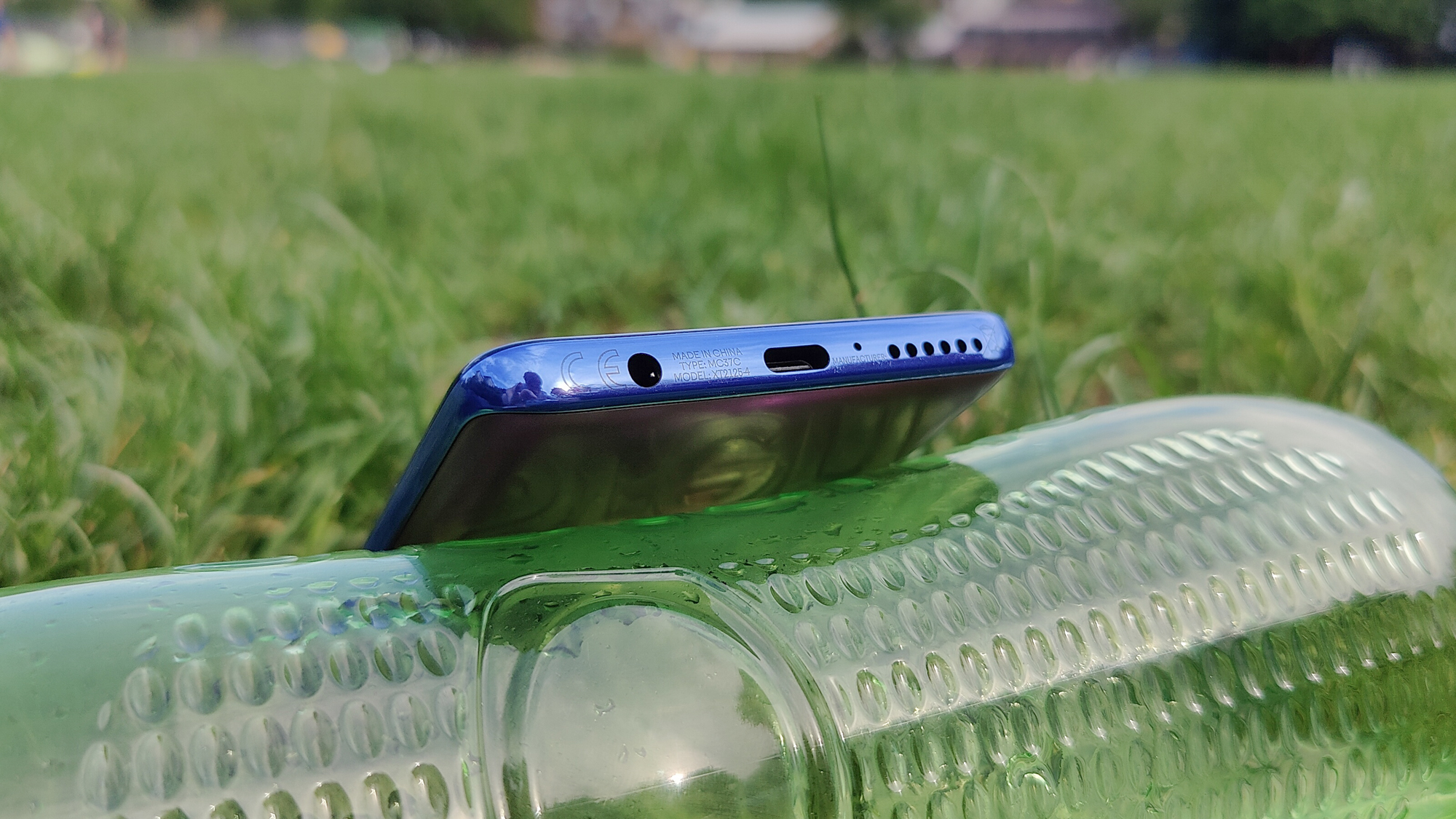
Turning the phone over reveals some surprises, both good and bad. The Iridescent Ocean back shifts from blue to purple in the light, and catches your eye effortlessly. Your other options are Iridescent Sky, which does something similar, but with a white base, and looks more elegant; and the U.S.-exclusive Slate Gray, which makes the g100 look a lot more grown-up. Unfortunately, the back on all versions is made of plastic rather than a more luxurious glass. It’s common at this price range, but still a shame to see.
Get instant access to breaking news, the hottest reviews, great deals and helpful tips.
The Moto g100 features a curved back and a 2.9-inch width that’s more narrow than the average smartphone. It means that despite the large amount of screen space and the thicker than average depth of its body, the g100 feels easy to handle even with a single hand.

The square rear camera bump protrudes only minimally from the main body, and three of the four cameras have a neat blue metal ring around the lenses. Motorola could have got away with something more spectacular considering the color scheme, but I appreciate the practicality of this uncomplicated design.
Motorola Moto g100 review: Display
There's a lot of screen real estate for the money with the Moto g100. At 6.7 inches and with an FHD display, this phone’s screen is on par even with some premium phones like the Samsung Galaxy S21 Plus, at least in terms of size and resolution. The g100 also features a 90Hz refresh rate, which can scale down to 60Hz either manually or adaptively.
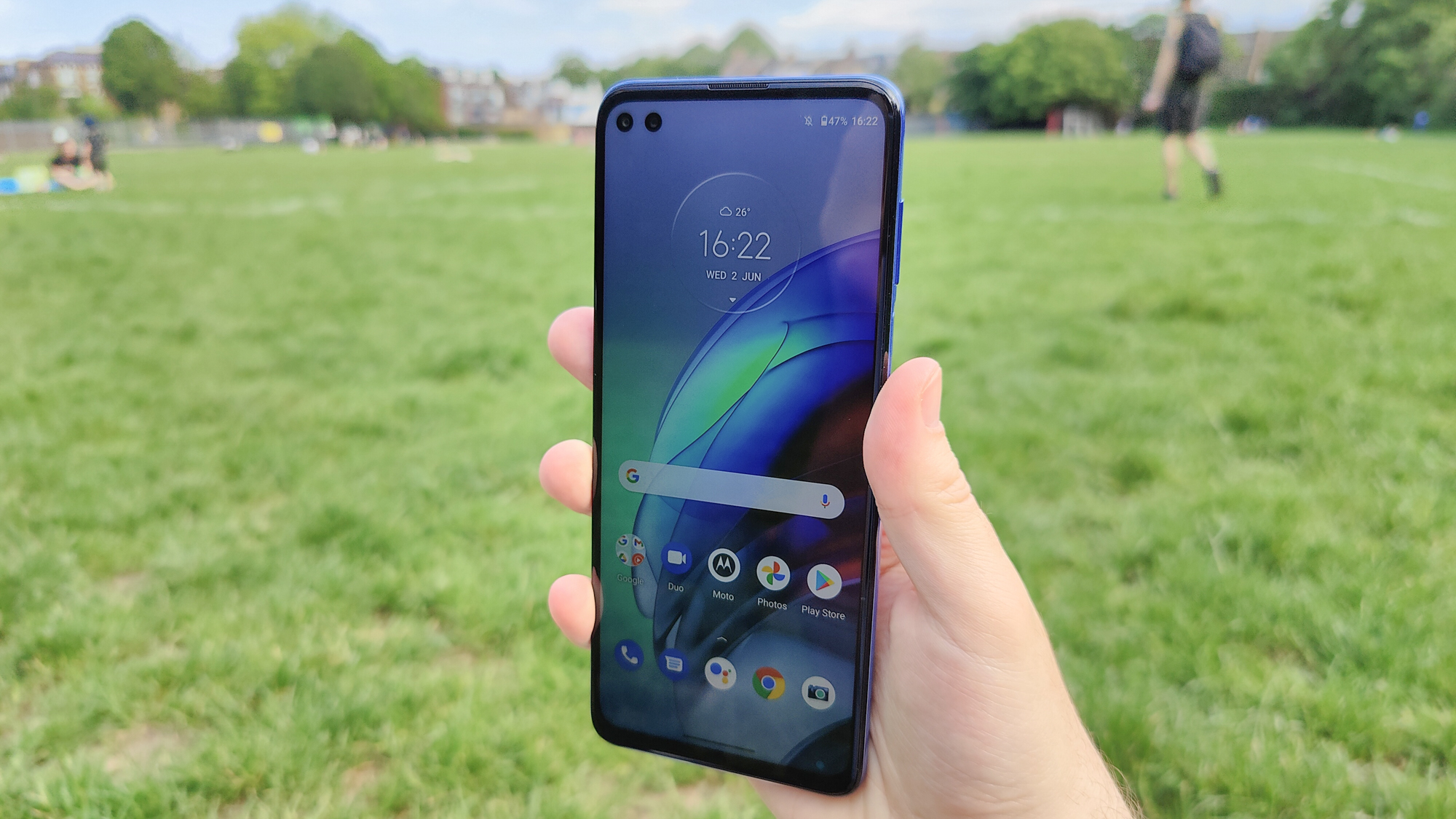
Watching the Horizon Forbidden West trailer on the g100 and a Google Pixel 4a 4G, I noticed cooler colors on the Motorola, although Aloy’s journey through some dense forests and along the water’s edge didn’t look any worse, just different from what the Pixel displayed. The g100’s display is plenty bright enough too, even when I used it outdoors in some recent very sunny weather here in London.
Motorola Moto g100 review: Cameras
Although the Moto g100 has four round glass lenses on its back, only two of them are actually cameras — a 64MP main sensor and a 16MP ultrawide shooter. The other two lenses are a 2MP depth sensor and a time-of-flight sensor, both used to help with camera effects.

I put the g100 up against a Pixel 4a 5G for this shot of Piccadilly Circus. The g100 produced a decent shot, though it’s not quite as bright as the Pixel’s image. That extra brightness benefits both the billboards and their reflections in the rain-slick road and sidewalk, and to a lesser extent the building fronts too, which makes the Pixel the clear winner.
I also tried the main sensors in night mode while wandering around Coal Drop Yards near Kings Cross. The g100 produces images with a distinct yellow color cast, which isn’t ideal. While looking through the several shots I took the same evening, I also noticed that the g100 can’t quite get the balance right between brightening the image enough to see more of the scene and keeping the color of the sky, buildings and lights looking good. This is a balance the Pixel 4a 5G consistently strikes, thanks to Google’s excellent Night Sight low-light mode.
An ultrawide shot, taken of the busy road crossing at Oxford Circus, is a closer contest. The Moto g100’s image is a little less saturated than the Pixel’s, which arguably makes it better since it’s a more accurate depiction of the dreary weather on the day I took the photos.
The g100’s ultrawide camera has another trick up its sleeve. Thanks to a ring light built around the edge of the lens, Motorola claims it functions as an effective macro camera too. In theory, this solves the normal problem with macro cameras — that they don’t let in enough light because of how close you have to hold the phone to whatever it is you’re photographing. To try this out, I used a Redmi Note 10 Pro, which sports one of the best macro photo phones around, as the yardstick to measure the Motorola against.
If this were any old macro camera, the Motorola’s well-lit (albeit yellow-tinged) shot of a wine bottle cork would beat it, since you can see a good amount of detail. However, I still prefer the Redmi’s shot, as the telemacro lens allowed for a greater distance between the phone and the cork, producing a more natural color. You see less of the cork due to the narrower lens angle compared to the Motorola shot. Plus, the small punctured portion is cast in shadow rather than lit up. But the Redmi has produced an all-around better image.
The last two cameras on the g100 are a pair of depth sensors. This called for a portrait mode shot, for which I swapped back to using the Pixel 4a 5G as my comparison phone.
The bokeh effect in the g100 image is spot on, featuring a nice amount of blur plus a near-flawless cut-out between my head and the background. I am a little over-exposed, though. The bokeh in the Pixel shot is post-processing-only, but still looks good. However I look much more normal, even if my skin tone looks a touch too saturated.
We have two images to look at from the Moto g100’s front cameras, first off from the main sensor. Again the g100 image is strangely yellow, plus a little too bright for my liking. The Pixel selfie has a more normal color temperature, although I again have much pinker skin than I do in real life.
The second set of shots were taken with the Moto g100’s ultrawide selfie camera and the Pixel 4a 5G’s equivalent zoomed-out selfie mode. While my complaints about the images’ coloring are the same, I do respect the utility of a front ultra-wide sensor. Even though I was holding the phone fairly close to me, there’s enough room in the Moto g100’s image for another one or two people, and holding the phone in landscape orientation and at arm’s length will leave more space to squeeze in you and your friends.
Motorola Moto g100 review: Performance
The g100 contains a Snapdragon 870 chip and 8GB RAM, which are powerful specs for a phone of this price. The Snapdragon 870 is a step up from the Snapdragon 865 Plus that powered many top Android flagships in 2020, so that’s an impressive amount of power for a mid-range phone. For context, the identically priced Pixel 4a 5G uses a Snapdragon 765 chip, and only 6GB RAM.
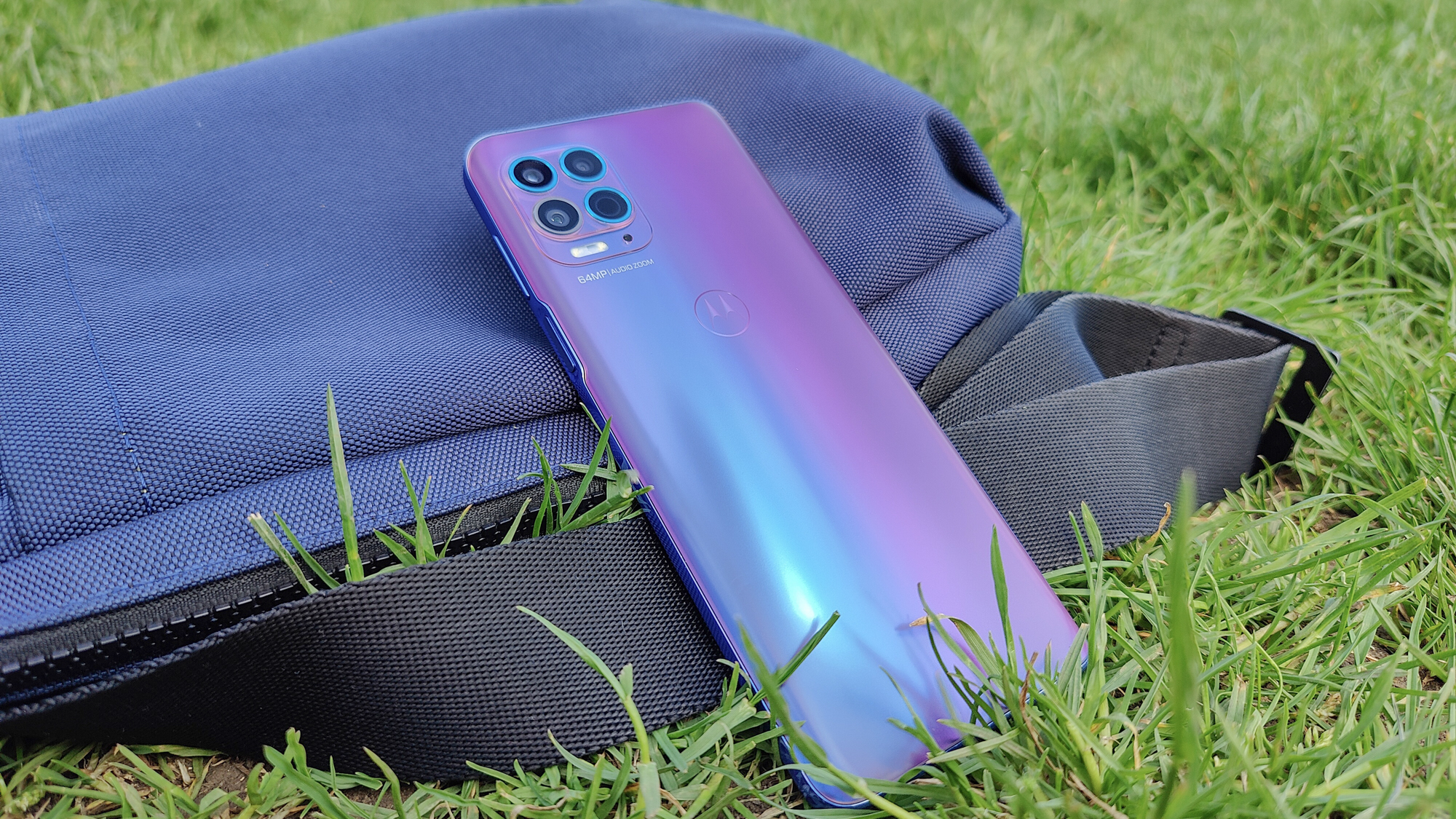
On the Geekbench 5 performance benchmark, the g100 scored 961 points in the single-core test and 2,855 in the multi-core test. That crushes the Pixel 4a 5G’s 598 and 1,614 scores, as well as the Samsung Galaxy A52’s 637 and 1,866 results. Before you get too excited though, the Samsung Galaxy S21, with its top-of-the-line Snapdragon 888 chip, managed 1,048 and 3,302, so it's well shy of flagship-level performance.
On the 3DMark Wild Life Unlimited graphics benchmark, the g100 managed a score of 4,157 points and an average framerate of 24.9fps. That’s a ways behind the Galaxy S21 5,805 and 34.8fps, but miles ahead of the Galaxy A52’s 1,101 and 6.6fps.
Motorola Moto g100 review: 5G
The Snapdragon 870 chip means you can enjoy 5G connectivity with the Moto g100. Motorola’s device only offers sub-6GHz 5G, but this isn't a problem for U.K. customers who only have access to sub-6GHz 5G.
For U.S. buyers, the moto g100 works with T-Mobile and AT&T's 5G networks, which are both sub-6GHz networks. You'll get faster 5G if you pick up a mmWave-compatible Pixel 4a 5G, but the Moto g100 should still offer future-proof data speeds.
Motorola Moto g100 review: Battery and charging
Motorola put a large 5,000 mAh battery, typical of the company’s G-series phones, in the g100. However, in my unofficial rundown test, discharging the phone from 30% to 0% by playing non-stop YouTube videos, the phone managed a rather average 3 hours and 58 minutes. This could be down to the g100’s large LCD display, which is less efficient than the OLED panels that many of its rivals use.
Motorola's other phones manage this same test better. The LCD HD display on the g100's little sibling, the Moto g10, lasted closer to six hours when drained from the same amount of charge via non-stop video.
The included 20W charger is perhaps a little underpowered for a phone with such a big battery. It fills the phone to just 34% in half an hour, and takes 1 hour and 35 minutes to fill the phone completely from empty. Those are identical timings to the Galaxy A52 5G (assuming you buy one of Samsung's 25W chargers separately), but slower than the Redmi Note 10 Pro, which fills 56% of its 5,020 battery in half an our with an included 33W charger.
Motorola Moto g100 review: Software
Motorola’s MyUX is very similar to stock Android, aside from a few custom colors and a couple of Motorola-made apps. For this reason, Android fans really won’t have much to complain about with the g100’s implementation of Android 11.
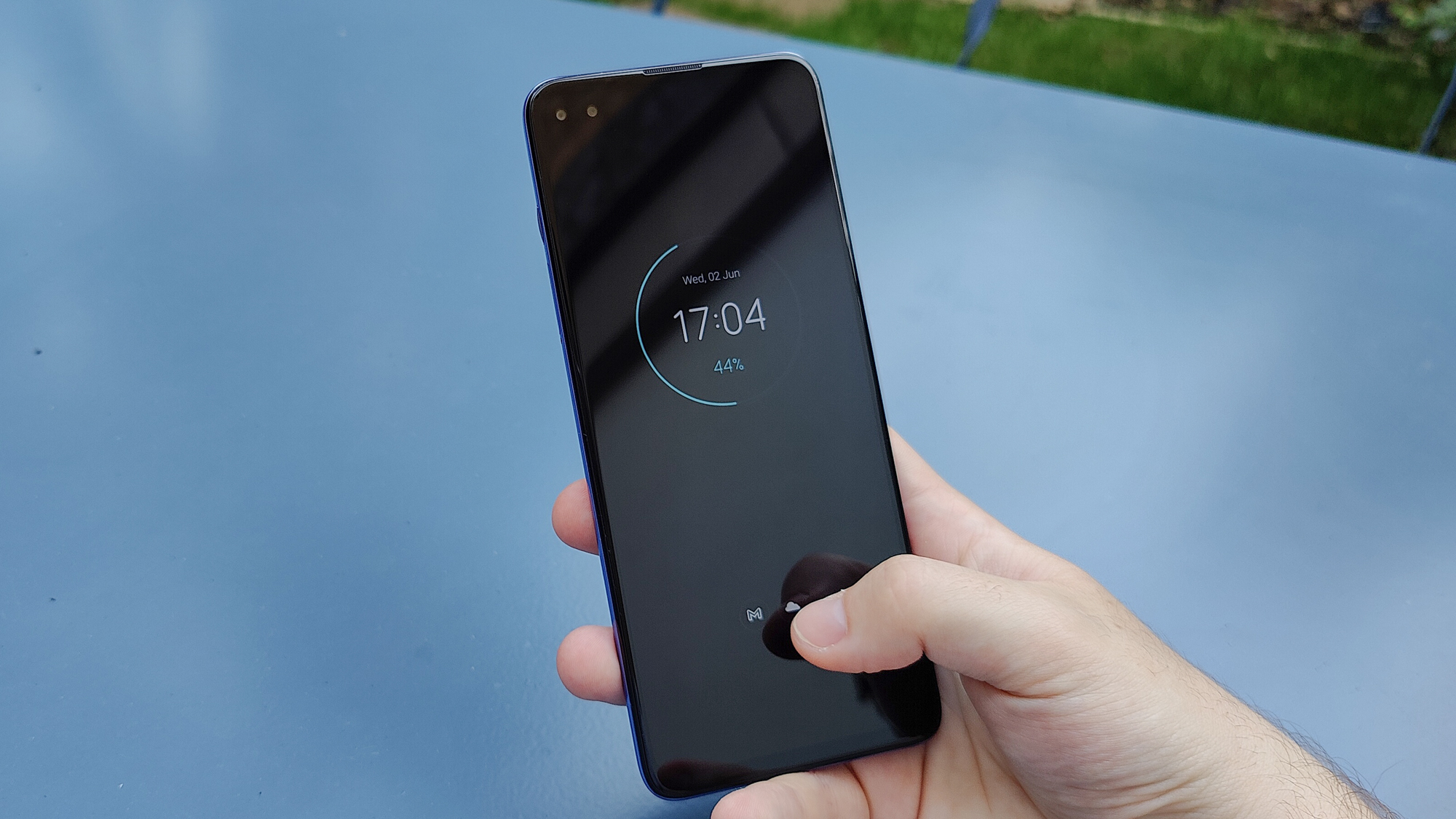
A couple of features I like that are unique to MyUX include the Peek Display, which lets you check your notifications in full without unlocking the phone. And the Moto app, which is full of worthwhile tips to help you get the most of your phone.
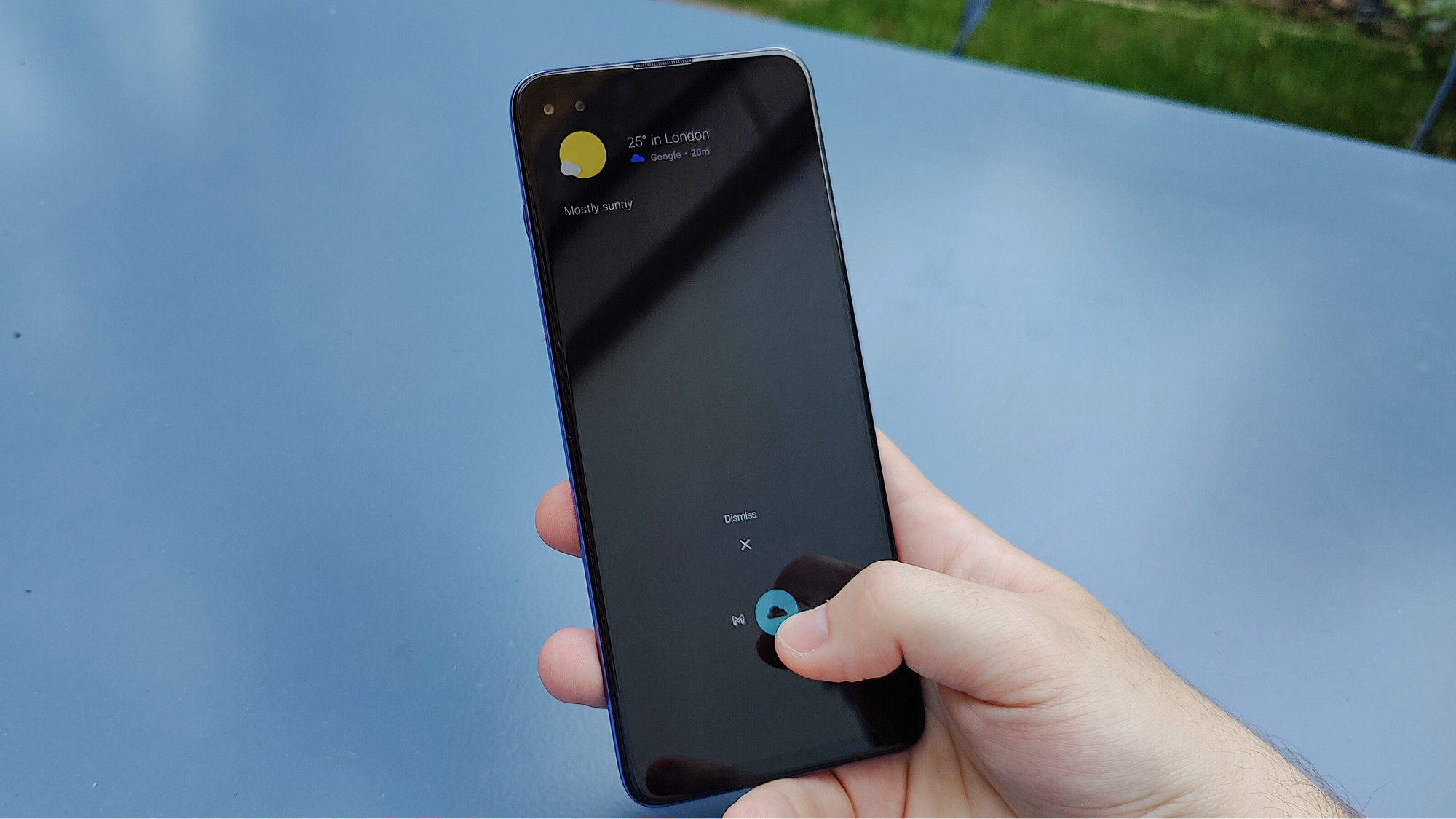
One of the big new features for the g100 is Motorola’s ReadyFor mode, which lets you open the phone’s apps on a monitor or TV via a USB-C to HDMI cable. When I tried out ReadyFor for a full day’s work, I found that the translation of Android apps to a desktop-style interface didn’t always work smoothly, with enough small inconsistencies to make working from the g100 irritating after an hour or two. That said, ReadyFor is definitely an easy way to put your mobile games or video calls on a big screen where you can make the most of the g100’s potent hardware.
Motorola Moto g100 review: Verdict
The Moto g100 is a real workhorse of a phone, covering all your needs as practically as possible. But unlike other members of the Moto G series, it’s also got some premium features that let the g100 excel in a few key areas.
The Moto g100 provides get one of the highest performance to price ratios in all the smartphone market thanks to a generously mighty chipset; you get a lot of display space to make the most of that power, too
At best, the Moto g100’s cameras are serviceable, though the ultrawide selfie camera is a standout. The software, assuming you’re using it on the phone itself, is nice and straightforward to use, and even if it can’t replace your laptop, ReadyFor still has a place as a big-screen gaming, movie watching or video conferencing mode.

Richard is based in London, covering news, reviews and how-tos for phones, tablets, gaming, and whatever else people need advice on. Following on from his MA in Magazine Journalism at the University of Sheffield, he's also written for WIRED U.K., The Register and Creative Bloq. When not at work, he's likely thinking about how to brew the perfect cup of specialty coffee.
